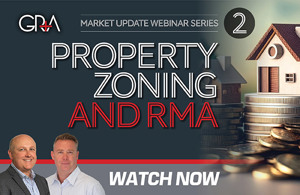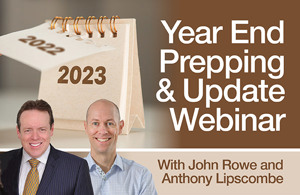
Main Home Exemption and Residential Exclusion - understanding IRD's stance on frequent disposals of family homes
Selling your home is often one of the most significant financial transactions an individual undertakes.
Fortunately, New Zealand tax law provides valuable exemptions which can shield profits from tax – primarily the main home exclusion to the bright-line test and the ‘residential exclusion’ to other land tax provisions.
These exemptions recognise that for most people, their home is primarily a place to live, not a speculative asset. However, these tax advantages come with an important caveat: they are generally not available if you demonstrate a ‘regular pattern’ of buying and selling residential properties.
What is the ‘regular pattern’ limitation?
This limitation exists to prevent the exemption from being used to shelter profits from what is essentially property trading activity. Recognising the potential ambiguity around what constitutes such a pattern, IRD have recently issued updated guidance. Published on 9 May 2025, the "Question We've Been Asked" (QB 25/09) provides clarification on how IRD interprets a "regular pattern" for property disposals occurring on or after 1 July 2024. This new guidance replaces the previous statement QB 16/07.
The purpose of this blog is to provide guidance and clarity on what factors are used to determine whether you have a ‘regular pattern’ of acquiring and disposing of residential land in relation to:
• the main home exemption to bright-line
• the ‘residential exclusion’ (different but similar to the main home exemption), which provides tax relief where you are disposing of your family home and are also in the business of dealing in, developing or subdividing residential land.
Bright-line and the main home exemption
The bright-line test, whilst widely heard of, is often misunderstood. The bright-line test as it currently stands captures any residential land disposal from 1 July 2024 where the property has been owned for less than two years.
The ‘acquisition’ date for the purposes of the start of the bright-line clock is:
• the date you enter into a binding sale and purchase agreement where the property is bought ‘off the plans’; or
• the date of settlement in all other cases.
There are several exemptions to the bright line rule, which, if applicable, will provide tax relief on any capital gain realised under a bright-line disposal. One of these is referred to as the ‘main home exemption’.
To qualify for the main home exemption to bright-line the property must have been predominately (more than 50% of the land size) used for most (more than 50%) of the brightline period by:
1. You (the vendor) where you are a natural person; or
2. A beneficiary of a trust (if the vendor is a trust); and
a. If the vendor is a trust, the principal settlor (person who has settled the most funds upon the trust) must not have a main home or if they do, the property sold is / was their main home.
There are then two exemptions to the main home exemption (exemptions to exemptions). You are not able to claim the main home exemption if:
1. You have claimed the main home exemption twice within the two years immediately preceding the bright-line end date (being the date you enter into a binding agreement for the sale of your property) of the residential land in question; or
2. You are engaged in a ‘regular pattern’ of acquiring and disposing of residential land.
It is this ‘regular pattern’ that has been a contentious area for a number of Kiwis, mostly traders / flippers and spec home builders who occupy their properties for genuine reasons prior to sale.
Dealing and development - it's more than just frequency
The core purpose of the ‘regular pattern’ limitation is to differentiate between individuals selling their genuine home and those whose activities resemble property dealing or development. The tax exemptions are designed for the former group. If someone frequently buys, potentially improves, and sells houses, their activity might look more like a business operation than simply changing residences.
Perhaps the most critical point clarified is that determining a ‘regular pattern’ is not simply a numbers game. There isn't a magic number of transactions that automatically triggers the limitation. Instead, IRD will look at the "totality of the circumstances" surrounding the transactions.
The central question IRD seeks to answer is whether these circumstances, viewed collectively, reveal a "discernible intention or purpose of dealing in land or developing land and disposing of it" at the time the properties were acquired. This is a more nuanced assessment focusing on the taxpayer's underlying motives and behaviour rather than just the frequency of sales.
To make this assessment, IRD will consider a range of factors, including:
(a) Frequency and habituality: While not decisive on its own, the number of similar transactions and the time intervals between them remain relevant. A history of repeated buying and selling can suggest a habit.
(b) Nature of the land: Was the property acquired primarily suitable for occupation as a home, or did it lend itself more readily to development or quick resale?
(c) Circumstances of acquisition and disposal: What were the stated and objective reasons for buying each property? Were the sales driven by genuine personal circumstances (e.g. job relocation, family size changes, relationship changes) or by market conditions and profit opportunities?
(d) Nature of the person's business: Is the individual involved in property development, construction, real estate, or related fields? Such involvement makes it more likely that property transactions are part of a business pattern.
(e) Relationship between transactions: Are the transactions isolated events, or are they linked, perhaps as part of a subdivision or a wider development project?
(f) Time between acquisition and disposal: Short holding periods can be indicative of an intention to trade rather than occupy long term.
(g) Improvements made: Were improvements made primarily for personal enjoyment and use, or were they substantial changes aimed specifically at increasing the property's resale value?
This shift towards evaluating the overall picture and underlying intent means that taxpayers whose transaction history might not even appear frequent also face a need to substantiate their claims for the main home or residential exclusion. It becomes crucial to maintain clear evidence demonstrating genuine private intent for each property acquisition and disposal.
Implications for property owners and investors (post 1 July 2024)
The clarification primarily affects individuals who buy and sell residential properties that they occupy, particularly if they do so relatively frequently. This includes property developers or traders attempting to use the main home / residential exclusions, but also potentially genuine homeowners who find themselves needing to move multiple times due to career or personal life changes.
The most significant risk is the unexpected denial of the main home or residential exclusion. If IRD determines a ‘regular pattern’ exists based on the overall circumstances, the profit from the sale could become fully taxable.
Given this clarified stance, if you are involved in property transactions you should consider the following actions:
(a) Review your history: If you have bought and sold multiple properties claimed as your residence or main home, objectively review your transaction history against the factors outlined by IRD.
(b) Document everything: Meticulously keep records that support your intentions for acquiring each property and the genuine, non-commercial reasons for each subsequent sale. This includes correspondence, agreements, council records, evidence of personal use, job transfer letters, etc.
(c) Seek professional advice: If you have a history of multiple property transactions, or are considering selling a property you have occupied but haven't owned for a very long time, it is important to seek expert tax advice before entering into an agreement for sale. Understanding how IRD might view your circumstances under QB 25/09 is vital for managing potential tax risks.
The qualified tax advisers at GRA can help
Navigating property tax rules can be complex, especially with evolving interpretations. If you are unsure how the ‘regular pattern’ guidance might apply to your situation, the experienced team at Gilligan Rowe & Associates can provide personalised advice based on your specific circumstances. You can contact us via our website or on +64 9 522 7955.
Disclaimer: This article provides general information only and does not constitute specific tax advice. Tax legislation and interpretations can change, and individual circumstances vary. Readers should consult with a qualified professional adviser before making any decisions based on this information.

Quade Fraser
Client Services Manager
Did you like this article? Subscribe to our newsletter to receive tips, updates and useful information to help you protect your assets and grow your net worth. We're expert accountants providing expert advice to clients in NZ and around the world.
Disclaimer: This article is intended to provide only a summary of the issues associated with the topics covered. It does not purport to be comprehensive nor to provide specific advice. No person should act in reliance on any statement contained within this article without first obtaining specific professional advice. If you require any further information or advice on any matter covered within this article, please contact the author.
Comments
Testimonials
The speakers at Property School were awesome and motivating with great knowledge of property - real people giving real examples. - Anon, April 2019
Gilligan Rowe and Associates is a chartered accounting firm specialising in property, asset planning, legal structures, taxation and compliance.
We help new, small and medium property investors become long-term successful investors through our education programmes and property portfolio planning advice. With our deep knowledge and experience, we have assisted hundreds of clients build wealth through property investment.
Learn More







































